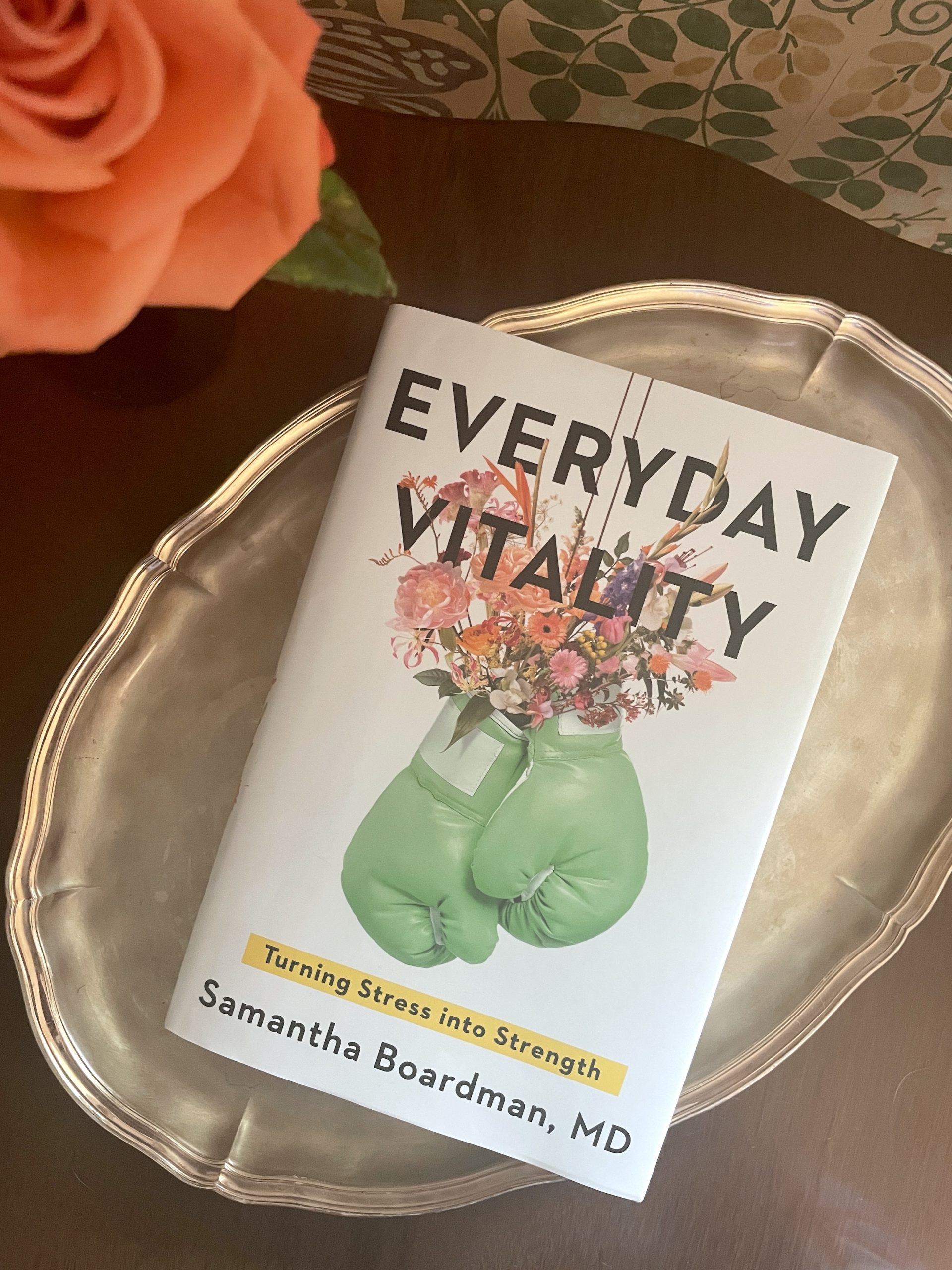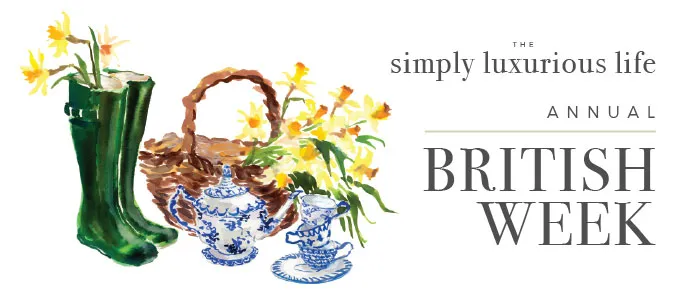Become a Member for as little as $4/mo and enjoy unlimited reading of TSLL blog.
“Vitality involves intersection with and participation in the world around you. It is not predicated on taking a year off to find yourself. It doesn’t require making a drastic change. You don’t need to lose yourself in self-reflection. You don’t need to overhaul your existence, or reinvent your life, or wait until the chaos [subsides].” —Dr. Samantha Boardman, author of Everyday Vitality
What is Vitality?
Vitality elevates the quality of each day, and it is something you cultivate with your actions, engagements and approach to living. “Health of spirit” is an oft definition of vitality, a “sense of feeling psychologically and physically up to the task”. Most directly, “Vitality—the positive feeling of aliveness and energy that lies at the core of well-being.”
- get the most out of each day
- created by deliberate actions
- associated with positive health outcomes such as (1) productivity; (2) better coping skills when stress and challenges arise; (3) greater mental health; (4) ability to manage negative emotions
It is important to note what writer and psychologist Andrew Solomon shares. “The opposite of depression is not happiness, but vitality.”
Picking up Dr. Samantha Boardman’s book Everyday Vitality: Turning Stress into Strength initially gave me pause. First of all, based on previous readings and research and my own experience, we shouldn’t be managing stress, we should be assessing and eliminating it at the source when and where possible. So it was her subtitle that almost had me backing away from reading the book. However, as soon as I read the introduction it was clear, much of the stress that is in our lives is self-made and thus can be reduced and/or eliminated. Her book is full of specific approaches, backed by research and multiple studies to demonstrate the significant shift and beneficial shift our lives make when we approach our everydays – how we interact, that indeed we do interact with the outside world and how we hold ourselves as we navigate through our days – thoughtfully and intentionally. In other words, actively engaging rather than passively observing.
Today I have ten approaches, tips and tools for improving the vitality in your everydays. There are far more than ten to be found in her book, so hopefully today’s episode will be a nice taste of what you may want to explore more if you pick up her book.
~Be sure to tune in to the audio version as much more is shared, more examples, more insights than what is listed below.
How to Improve Vitality
1.Reduce the ‘micro-stressors’
“Those who reported a high number of everyday hassles were three times more likely to die than those who reported lower levels.”
The daily hassles that up until now have been accepted and put up with because they didn’t seem too big or not a big deal slowly and steadily reduce the quality of our lives. Pay attention to the mini headaches you allow, and explore how to remove them so you can feel the elevation in your everydays. It is possible, and doing so will make a tremendous difference. Your energy levels increase, your mood brightens, and you engage more fully and exuberantly with others, yourself and the larger world.
2. Look at your daily actions. Do they reflect what matters to you?
“Doing something that feels meaningful or that matters to you, and not just thinking about it, is uplifting.”
A life of vitality requires that we engage, that we be active and thus to not be passive. “Vitality is a reflection of how we actually choose to live.” Dr. Boardman gives examples of living passively: “living a life on Autoplay, shrinking from challenges, isolating oneself, dwelling on the past, and burrowing internally”.
Often due to exhaustion or insecurity, we behave in ways that go against our values. Our fears rise up and determine our choices regarding how we engage with others, especially those we love. From jealousy, to doubt, to assuming the worst, we let our fears create problems that didn’t previously exist. Or at the very least, present a self that does not reflect what we value – trust, clear communication, kindness, etc.. Reminding ourselves that we can only tend to our tasks and we must let others attend to theirs, when we actively decide, rather than “sliding into our decisions” prompted by unhelpful emotions, we avoid draining vitality and instead strengthen it.
3. Engage in micromoments throughout your everyday that boost your resilience
“Vitality is cultivated and enhanced through productive and meaningful actions: having a good conversation, doing a favor for someone, going for a walk, reading an interesting article and then calling a friend to discuss it. They are other-oriented. They are outward-oriented. They are action-oriented. They are not internal, nor individual, nor do they require sustained self-immersion. On the contrary, they require engagement and interaction.”
4. Refrain from retreating into your own head
“Thinking and talking about issues can only take you so far. You can reflect ad nauseam on your internal world, but it’s your actions and experiences in the real world that shape you.”
“Self-focused attention can be productive in the short term. We need self-reflection to process experiences so that we can learn from them and move forward. But too much self-reflection can result in self-absorption, which can entrench us in ruminative thoughts. When this happens, instead of an oasis of revitalization, getting locked in our own heads can be counterproductive, isolating us from others and closing us off from opportunities that expand our minds, exercise our bodies and stretch our souls.”
5. Cultivate ‘uplifts’
“There is increasing evidence that positive everyday experiences and activities that engage, connect and fortify us are critical sources of vitality.”
By being present in our everydays, engaging consciously, we can both appreciate the minor positive events in our everydays and provide them for others in our lives as well. From receiving sincere praise from a boss or colleague, sharing an unedited laugh with a friend, a commute home void of complication, all of these positive events increase our vitality, and by noticing them and appreciating them we will find even more than we realized were present in previous days.
When we cultivate ‘uplifts’ we welcome more positive emotions into our days and “when you’re in a more positive frame of mind, you are more likely to interpret a bother as a challenge”.

Living a life of contentment is an exercise in holding ourselves in the present, engaging fully – responding, not reacting – and when we do so we are not dwelling on the past or worried about the future or anticipating a better future. We are right here, right now, entirely. We notice the beauty – the birds chirping and dancing about, the need to help a colleague by holding the door for them, etc.. We engage with an open mind, and thus bring curiosity and a frame of mind to solve rather than complain.
Dr. Boardman points out that “sources of uplifts are rarely self-focused”. You are looking outward, engaging with the world around you – the people, Mother Nature, the community. “A study found that people who engage in prosocial actions like donating money to charity or helping another person exhibited greater self-control than those who didn’t.” The point being, you fuel yourself with more vitality to choose well by engaging positively with the world around you. And even better, “uplifts are easily generated because they don’t require either money or extraordinary circumstances.”
6. Value social relationships
“When you feel socially connected, little things are less likely to get under your skin. Studies show that a hill feels less steep to climb when a hiker is accompanied by a friend.”
Having listened to an interview on NPR recently about work and viewing the workplace as the primary source where friendships are made, the conversation revealed that if our only source for social connection is our workplace, it can be toxic to our well-being. A better approach is to build relationships in all areas of your life. When you build healthy social connections, you bolster your vitality. From exercising with others – walking with a friend or attending a class (in-person), to making time (reducing the ‘busyness’) to see people outside of those you have to see when you are at work is crucial to vitality. Our mental health depends on connection with the outside world. The more we retreat, the weaker our vitality becomes.
“Knowing you are loved literally lessens pain, lightens the load, and propels you forward up those steep hills.”
7. Refrain from venting
“Venting can feel great in the moment, but doing so repeatedly without any resolution or forward progress can make you feel worse.”
I will be the first to admit, I thought venting was beneficial. Turns out, not so much. The key is solution-seeking, but if all we are doing is complaining, worrying and holding on to what happened, we are draining ourselves of the vitality we need to live well. Dr. Boardman goes on to say “Excessive complaining and rehashing personal problems with someone else is known as co-rumination and can amplify stress, especially in those who are already feeling down.” While in the moment it may feel good to share or to listen to someone else’s venting as we feel we are providing them support and love. In actuality the feeling that we seek is fleeting. What we need to learn and teach others who feel venting to us is helpful is instead become comfortable with discomfort, understand how to sit with the unknown and trust ourselves to move forward well even when not all is in our control.
How to move past the desire to vent? Try self-distancing. Putting space between yourself and what is bothering you “helps to take the sting out of everyday upsetting events.” When we self-distance we put our ego aside, Boardman points out, and we give ourselves perspective which enables us to move forward more easily.
8. Exchange frequent positive interactions throughout the day
“Simple everyday positive interactions are the lifeblood of companionship and connection.”
I appreciated Boardman’s attention to in-person connections. Passively engagement doesn’t bolster vitality beyond the temporary moment we see the text, see the likes on our IG post, etc.. It is in active engagement, even in the smallest peck on the cheek or lips from our partner as they go out the door to work that makes a profound difference. The key is frequency, not the gravity. Meaning the positive engagement need not be grand (a bouquet of roses delivered to surprise you), but rather eye contact to show you are listening, a rub on the back, the touch of the hand. These simple things add up and build our vitality to not only have a great day but strengthen our relationships with those we love and care for.
9. Challenge yourself
To maintain or strengthen vitality it is important to understand the difference between demand-shielding activities versus effortful intentional activities. Studies have shown that when we challenge ourselves to learn something new, an intellectual new skill to acquire, a reduction of anxiety results and it also builds resilience. A demand-shielding activity is any activity that “requires little of us physically, intellectually and socially.” From checking social media, surfing the internet, watching television if we are not learning something new, are each demand-shielding activities.
To further the point shared throughout today’s post/episode, when we choose to challenge ourselves intellectually, we are looking outside of ourselves for knowledge we don’t currently possess, and thus we are not isolating, we are not turning within which further reduces our vitality. When we choose to learn, as astronomy professor Abraham Loeb observed, we are “giving a higher priority to the world around [us] than to [ourselves]”. As well as increasing our vitality, when we learn something, when we stretch ourselves, it is rewarding not only for our brain but our body as well. It simply feels good to learn and achieve something we hadn’t been able to do or understand previously. That positive emotion fuels our vitality.
10. Find your flow
“The more flow you experience in your daily life, the more vital and replenished you will feel.”
I absolutely loved reading Dr. Boardman’s point about the benefits of finding our flow and engaging in this space regularly. While often the term flow, being deeply immersed in what you’re doing so that you are not thinking about anything else, is associated with creatives – artists, etc. – the truth is flow is any situation in which you are fully immersed with the present moment and not thinking about anything else. You are all in and savoring it deeply. An engaging social interaction, a walk with a loved one or on your own in which the surroundings and/or company have your rapt attention. Understanding how powerful flow can be gives us permission to prioritize doing what holds us in such a place. Find your flow, see your vitality rise.
Dr. Samantha Boardman addresses many more tools for increasing our everyday vitality, so I highly recommend you check out her book Everyday Vitality: Turning Stress into Strength. A more obvious yet often forgotten or dismissed way to increase your vitality – prioritize a deep, restful, regular night’s sleep; also, she reminds that those of us who compare ourselves with others weaken our vitality and while it’s good to have high standards, keeping them attainable is key also. Most importantly, she underscores the importance of engaging with the world. She concludes her book by reminding to “turn away from the mirror and look out the window. Even better, I hope you’ll throw open the door and venture out safely into the world.”
Of course, I read this with introverts in mind especially, being one myself, and I wholeheartedly agree that action and social engagement and healthy social relationships are key to a life full of vitality. The key with social engagement is to be open to a variety of different types. Introverts often prefer more one-on-one engagement and we need to honor what feeds our individual temperaments and not force someone else’s definition of what social engagement is upon ourselves if it doesn’t feel life lifting. Listen to yourself, get to know yourself and then challenge yourself to step away from looking too often inward (self-examination is healthy, but it has its limits) and engage with the world so that you can live.
Many of us have been made aware of a needed balance of social engagement and time in our own company to refuel as we were forced to from one extreme to the other. Find your happy balance, come to understand why it works for you, and intentionally hold yourself in the present looking for and cultivating positive moments (uplifts) and micro moments along with frequent positive exchanges. I am confident you will begin to see an improvement in the quality of your everydays. The vitality component is entirely in your hands. Invest and savor what you have nurtured to be of value.

Everyday Vitality: Turning Stress into Strength by Samantha Boardman, MD
Petit Plaisir
—Magellan (click here to learn more)

View all TSLL Petit Plaisirs here.
~The Simple Sophisticate, episode #316
~Subscribe to The Simple Sophisticate: iTunes | Stitcher | iHeartRadio | YouTube | Spotify | Amazon Music
[podcast src=”https://html5-player.libsyn.com/embed/episode/id/21157580/height/90/theme/custom/thumbnail/yes/direction/forward/render-playlist/no/custom-color/d0d4b9;color: #6f7056 !important/” width=”100%” scrolling=”no” class=”podcast-class” frameborder=”0″ placement=”bottom” primary_content_url=”http://traffic.libsyn.com/thesimplesophisticate/316Vitality.mp3″ libsyn_item_id=”21157580″ height=”90″ theme=”custom” custom_color=”d0d4b9;color: #6f7056 !important″ player_use_thumbnail=”use_thumbnail” use_download_link=”use_download_link” download_link_text=”Download the episode” /]



Shannon-this was a lovely way to wake up to Monday morning and the start of the week. What a great inspiration and really thought provoking. Thank you for such a true gift!
Thank you for tuning in Shauna ? Wishing you a lovely week.
Thank you for always being the teacher–cognizant of others learning patterns and using your best knowledge to winnow and present the best for all of us, according to the TSLL precepts. I would have brushed this book aside as well, but will check out through my library’s resources, thanks to you.
I think this is a propos to the post ,so I’ll share: Today a friend and I were talking about how bedraggled our garden beds were and how she was feeling a bit guilty and overwhelmed. “Go to the feed and seed store and pick up some pansies! Stuffing in pansies are awesome!” “I will!” she said. “I’ll send you a picture, if they work out.” I said, ” Just send me a picture of the pansies. All I need is to know that somewhere, there is an opportunity for the possibility of hope.” She liked that. Anyhoo. XO Rona
Rona, your example is perfect. ? Thank you very much for sharing. Uplifts and positive seemingly simple exchanges are incredibly powerful. (Thank you as well for your kind words ?)
I really needed to read this today! Thank you! I am going to sign up for a wreath making class at the library. I have always wanted to make a wreath, and I love Christmas time!!
Have a nice week Shannon!
Tamra, wishing you a most wonderful holiday season. ? Thank you for stopping by.